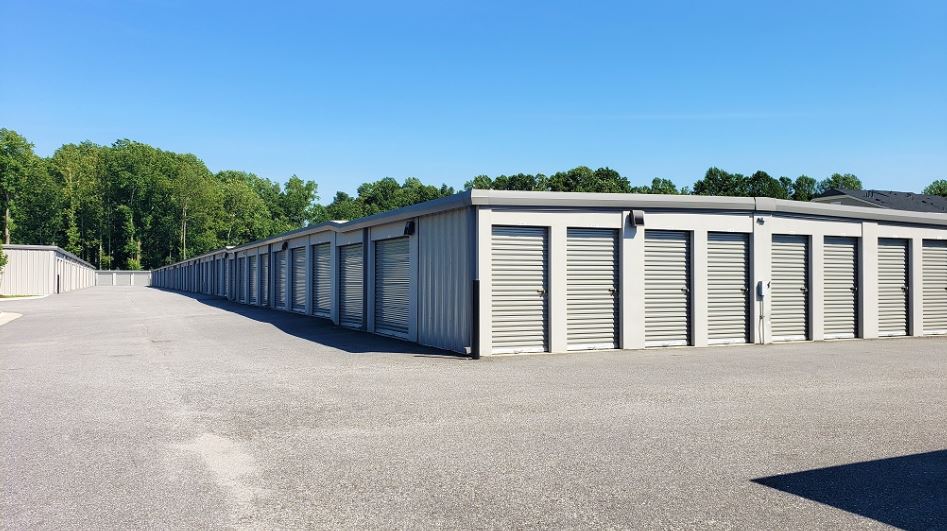The objective of valuation is to determine worth based on unbiased metrics which can be calculated to assign value. Yet with varying approaches, parties cannot always agree. Owners and investors may assign different numbers, even when researching the same facility. Understanding the available methodologies and capitalizing on value-add opportunities should be the goal of both owners and investors when determining value. Examination of acceptable forms of valuation allows for an impartial calculation of worth.
Sales Comparisons:
Although familiar to most, when valuing storage, the sales comparison approach will likely be inaccurate. Sales comps should not be used independently because there is often a lack of comparable sales within an adequate timeframe and/or radius of the subject property. If comparable sales do exist, the purchase price may be undisclosed; therefore, the average price per square foot could appear considerably lower than the true amount. Sales comps are able to report the change of ownership, presence of private and/or REIT owners, and, when reported accurately, price per square foot. Although they do not provide the entire picture, they should be part of the valuation process.
Cap Rates:
Everyone loves to talk cap rates, why? Because cap rates are a simple way for owners and investors to express value. Cap rates are market specific and mathematically generate a number linking net operating income to value. Because they are dependent on reviewing financials, owners should be wary of anyone quoting a specific cap rate if they have not reviewed your P & L. Evaluators assume reoccurring revenue will be accounted for and expenses accurately reflect current market rates. Occasionally, financial reports can uncover a discrepancy in expense reporting. For example, what happens when the owner is performing all of their own maintenance? Or when a manager is being paid double what the other managers in the area are being paid? Both scenarios change the expense report and therefore change the cap rate. Owners should know their income-to-expense ratio to remain competitive in their market. Reviewing operating expenses and making necessary adjustments will help maintain the value of the property. Investors will be critically analyzing expense ratios and applying their own metrics when assessing value. They will take into account the numbers you provide and then adjust accordingly for any values that do not match up with the market.
Rates & Occupancy:
Rent rates deserve considerable attention for true valuation. Due to their intimate relationship with cap rates, income, and overall value, examination of rates is a vital part of calculating worth. Although many owners are not keen to raise rents, it is a necessary step to increase value. When owners are not increasing rates, the value of their property is negatively impacted. Rental rates should increase accordingly with your market. Whether your plan is to sell or hold, study the street rates in your market and catch up to them if you are not currently there.
Owners should understand that 100% physical occupancy is not the goal. In fact, this is often seen as negative by investors when assigning value. Recognizing the difference between physical and economic occupancy is essential. Value is seen in economic occupancy because it measures total possible income versus the number of filled units. Hovering around 90% economic occupancy should be the goal of owners hoping to achieve maximum value. If you are currently at 100% physical occupancy, consider raising rents, this will help the value of the property.
Additionally, capitalizing on square footage and the ideal unit mix for your market is essential for return on investment. If no one in your market has any 5X5 units available consider if you are able to provide this unit size. Minor investments in unit mix can create opportunities for increase in value.
Macro & Micro Economy:
We have little control over macroeconomic factors, but grasping the impact of population growth, interest rates, and inflation can help to provide scale in determining value. Macroeconomics strongly influences the landscape of the commercial real estate market. As we are seeing in our current economy, rising interest rates are directly impacting the amount buyers can pay for properties. Investors who require financing are unable to make the same offer they could a year ago. For owners, it feels like they have somehow lost value, but what has actually changed is the buyer’s purchasing power. Investors must account for the increased cost of acquisition, and the difference will be reflected in their offer. To the owner, it may appear as a lower value, but the reality is investors who rely on financing have to cover the cost to borrow funds.
Microeconomic factors such as traffic counts, access to the market, surrounding retail and housing, etc. can greatly alter the valuation of two seemingly similar properties. Visibility and ease of access directly impact customer preference when choosing a facility. If your visibility is hindered, invest in a strong digital presence. As we become an even more digital society, the allocation of funds for digital marketing is essential. Owners who do not currently have a line item on their expense report for digital marketing should know that investors will add it to their calculations when assigning value.
Owners need to be knowledgeable of approved development projects by local planning boards. Anytime retail or housing is approved and/or under construction near your facility, it will help value. Know and understand the impact of local zoning laws and tax changes as they too can alter the value of a property. An example can be seen in markets with strict zoning regulations for new storage. This creates value for existing storage. Owners should ask “what barriers to entry exist in my market?” and “how do they affect the value of my facility?”.
Determining Value:
When calculating value, the best approach for both owners and investors is to do the research.
Owners should review their financials and compare them with their competitors. Using a critical eye to assign objective, emotion-free values, and making appropriate adjustments are essential. If owners do not have access to competitor information, they should reach out to professionals willing to share free data.
Investors often are comfortable with performing research but should consider using multiple sources when assigning value. Access to only one industry platform limits the ability of an investor to assign value.
Values consistently change; therefore, owners and investors should continuously familiarize themselves with changes at the facility level, within the surrounding market, and throughout our country as a whole.












